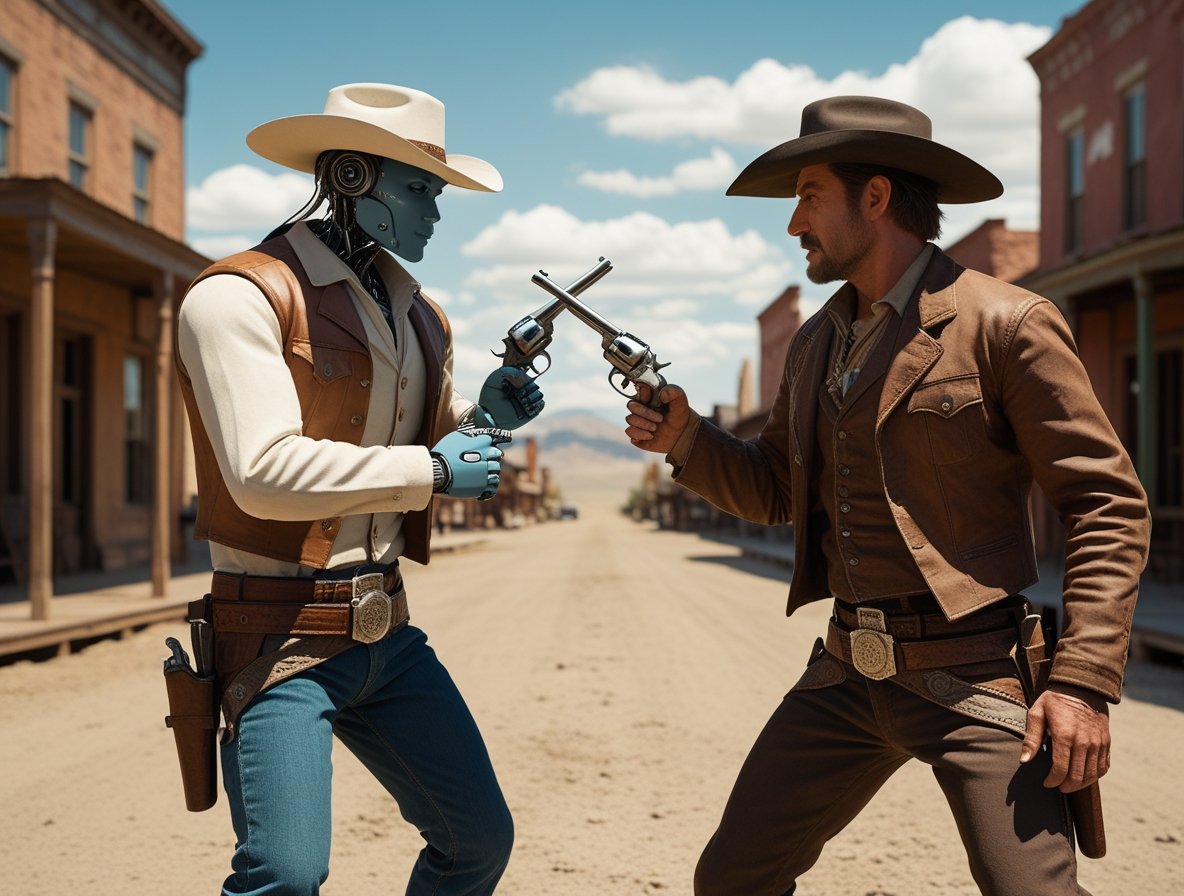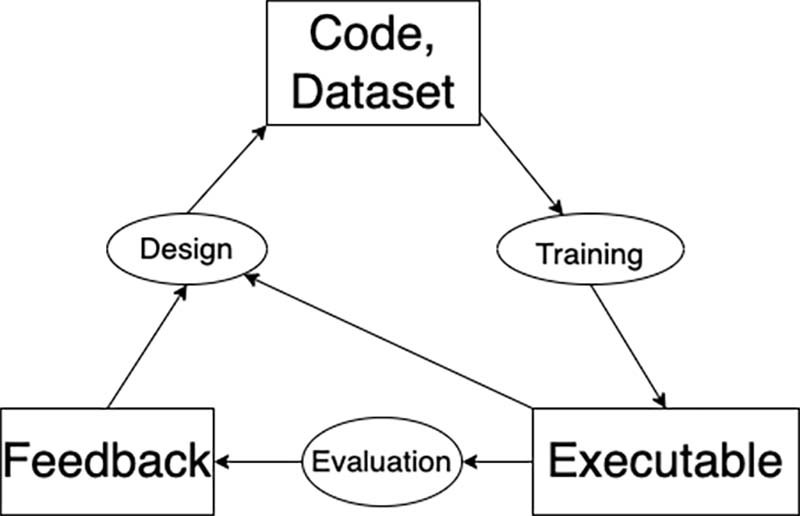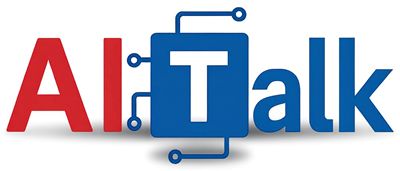The Duel of the Digital Age: Will AI Kill Programmers?

Between Eric Schmidt's apocalyptic prophecies and the pragmatic realism of industry experts, where does the hype end and reality begin?
If the tech industry were a science fiction movie, we would now be living that crucial scene where robots begin to replace humans. But unlike "Blade Runner" or "I, Robot," there's no Harrison Ford or Will Smith here to save the day. There's only Eric Schmidt, former CEO of Google, prophesying the end of programmers within a year, and on the other side, experts like Salvatore Sanfilippo throwing up their hands and shouting, "Wait a minute, hold on, everyone!"
The battle has begun, and the bullets are vitriolic statements, academic research, and a lot, a whole lot, of confusion. In this war of bits and algorithms, however, the truth is decidedly more complex than sensational headlines would have us believe. Let's take it one step at a time, because when we talk about the future of millions of developers around the world, every word counts.
The Prophet of the Apocalypse: The Visions of Eric Schmidt
Eric Schmidt isn't just some guy talking at a sports bar. He's the man who led Google for a decade, transforming a university search engine into the tech giant that dominates the web. When he talks, the industry listens. And what he said recently made more than one programmer's hair stand on end.
"We, as an industry, believe that in the next year the vast majority of programmers will be replaced by AI programmers," Schmidt declared with the confidence of someone who has seen the digital age born and grow. He didn't stop there: he predicted university-level mathematicians created by artificial intelligence and a future where asking "what language do you program in?" becomes as obsolete a question as "how many revolutions does your vinyl record make?".
His worldview is that of a future dominated by AI "agents" that handle everything from buying a house to lawsuits against the defaulting contractor. Schmidt describes this scenario with the casualness of someone ordering a coffee: "I want to buy another house. I say, 'Find me a house in the DC metropolitan area. Look at the building regulations.' That's an agent. 'Examine all the rules. Find out how big a house I can build.' That's another agent." The process continues to the final punchline that sounds like a sitcom punchline: "in the end you sue the contractor for non-performance."
The heart of his argument lies in what he calls "recursive self-improvement." According to Schmidt, already today about 10-20% of the code that the research labs of OpenAI and Anthropic develop is automatically generated by their own systems. It's a bit as if HAL 9000 from "2001: A Space Odyssey" had learned not only to speak, but also to reprogram itself.
But Schmidt, with a joke that perhaps betrays more truth than he intends, defines all this as "the San Francisco consensus because everyone who believes in it is in San Francisco. Maybe it's the water." A phrase that makes you smile but hides a disturbing question: are we really witnessing a global revolution or are we in a technological bubble that distorts the perception of reality?

The Voice of Dissent: Sanfilippo and Technical Realism
On the other side of the intellectual ring, Salvatore Sanfilippo - creator of Redis and one of the most authoritative voices in the world of software development - counterattacks with arguments rooted in direct experience with code. In his video speech, Sanfilippo dismantles the apocalyptic predictions piece by piece, bringing in Matt Garman, CEO of Amazon Web Services, as a star witness.
Sanfilippo's thesis is as simple as it is devastating for the prophets of technological doom: programming is not just writing code. It's understanding complex problems, translating them into elegant solutions, managing teams, communicating with clients who often don't even know what they really want. It's like the difference between knowing how to play the piano and composing a symphony: technically you use the same keys, but the creative and intellectual universe that separates the two activities is abysmal.
Garman, who leads the world's largest cloud platform, maintains a pragmatic approach that contrasts with Schmidt's visions. While acknowledging that AI will change the way we program, he doesn't talk about total replacement but about the evolution of the role. It's a bit like when word processors replaced typewriters: journalists didn't disappear, they just changed their work tools.
Sanfilippo's argument touches the heart of the problem: current AI excels at generating code when the problem is well-defined, but the programmer's work begins long before opening the text editor. It begins when the client says "I want an app like Facebook but for cats" and the developer has to transform this surreal request into concrete technical specifications.
The Chorus of Experts: Voices from the Technological Front
The debate is enriched by other authoritative voices, creating a chorus that ranges from catastrophism to prudent optimism. Emad Mostaque, former CEO of Stability AI, joins the pessimistic camp with an even more drastic prediction: according to his statements, within five years there will be no more human programmers. Mostaque cites a figure that makes you think: 41% of the code on GitHub is already generated by artificial intelligence.
However, like a good technological Sherlock Holmes, I have not found the specific 41% figure cited by Mostaque. The GitHub platform instead speaks of different metrics: a 55% increase in speed in completing tasks and qualitative improvements along eight different dimensions of the code. But the point is not so much the accuracy of the number as the concept behind it. As often happens in the tech world, the precise numbers become less important than the direction of the trend, and that direction is as unmistakable as a chase scene in an action movie: AI is gaining ground at an impressive speed.
But these numbers, apparently overwhelming, deserve a more careful analysis. It's like saying that 41% of the words in this article were suggested by the computer's spell checker: technically it could be true, but substantially irrelevant to the creative and intellectual process behind the writing. The code generated by AI is often boilerplate, standard functions, repetitive snippets - the mechanical part of the job, not the one that requires ingenuity and creativity.
Jensen Huang of Nvidia, for his part, adds an interesting piece to the puzzle by arguing that AI could eliminate the need to study programming in the traditional sense. But here too, as often happens in the statements of big tech CEOs, there is a simplification that smacks of marketing. It's a bit like saying that since GPS navigators exist, you no longer need to know how to read a map: true until the satellite loses its signal.
The more moderate voices in the sector, as reported by various specialized analyses, speak of man-machine collaboration rather than complete replacement. It's interesting to note a pattern: the closer the experts are to the code on a daily basis, the more skeptical they tend to be about apocalyptic predictions. It's as if those who have their hands in the dough know how to distinguish between the flour and the finished bread.
The Reality of the Numbers: Deciphering the Code of Data
When it comes to technological revolutions, numbers can be valuable allies or insidious enemies, depending on how you interpret them. The famous figure cited by Mostaque - 41% of the code on GitHub generated by AI - deserves a forensic analysis worthy of "CSI: Cyber".
This number, impressive at first glance, tells only part of the story. It's true that AI excels at generating standardized code, common functions, repetitive patterns. But it's a bit like saying that an orchestra has been replaced because 41% of the notes played are C, D, E. The notes are important, but the symphony is born from the arrangement, the interpretation, the creativity that connects them.
The concept of "recursive self-improvement" that Schmidt posits as the keystone of the future deserves a more serious technical examination. The idea that AI can recursively improve itself to the point of reaching a superintelligence is as fascinating as it is controversial. It is the Holy Grail of artificial intelligence, but also its Frankenstein. AI alignment experts are divided: some see this scenario as inevitable and imminent, others consider it a mirage light years away from current reality.
The truth, as often happens in science, probably lies in a gray area. Current AI is very good at specific and well-defined tasks, but still struggles with contextual understanding, genuine creativity, managing ambiguity - all skills that are daily bread for an expert programmer.
The Automation Paradox: When Robots Need Humans
There is a fascinating paradox in the history of technology that deserves to be told: the more we automate processes, the more we need qualified people to manage the automation. It's like in "The Matrix" - someone has to program the Matrix, right? And that someone, for now, is still us humans.
Every technological revolution in history has followed this pattern: it has destroyed some jobs, transformed others, and created completely new ones. The weavers of the 19th century feared that mechanical looms would put them all out of work, yet the modern textile industry employs millions of people around the world. Different roles, different skills, but always people.
In the case of programming, we are witnessing a similar transformation. The programmers of tomorrow may not write code line by line as their colleagues in the 1980s did. They might become "AI whisperers," specialists in communicating with artificial intelligence, in defining complex architectures, in managing the interaction between automated systems and real human needs.
It's a bit like the evolution from the first gigantic computers that occupied entire rooms to modern smartphones. The technology has changed radically, but the need for people who understand how to use it, how to optimize it, how to solve problems when it gets stuck, has remained intact. In fact, it has increased.
The programming of the future will probably be more similar to film directing: the director doesn't personally shoot every shot, doesn't move every single camera, doesn't record every line. But he has the overall vision, coordinates specialists, makes creative and technical decisions that no machine can make in his place. Spielberg uses computerized special effects, but "E.T." continues to move audiences for reasons that go far beyond the technology used to create it.
Beyond the Prophecy: Realistic Scenarios for the Future
Let's try to imagine more realistic scenarios, less Hollywood-like than the apocalyptic predictions but also less conservative than "nothing will ever change." In the next decade, we will probably see a stratification of the job market in programming.
At the basic level, many repetitive tasks will indeed be automated. Just as ATMs have reduced the number of cashiers but not eliminated banks, AI will reduce the demand for certain types of routine programming. Junior developers who were limited to implementing detailed specifications may find themselves in difficulty.
At the intermediate level, new professional figures will emerge: prompt engineers, AI trainers, hybrid developers who will know how to orchestrate artificial intelligence systems to create complex solutions. It's like when web designers were born in the 90s - a profession that didn't exist before but that has come to be essential with the evolution of technology.
At the high level, system architects, tech leads, CTOs will continue to be fundamental. The tools may change, but the need for people who understand complex systems, who know how to translate business needs into technical solutions, who manage teams and projects, will remain intact. It's like saying that the existence of GPS has not eliminated the need for civil engineers to design roads.
The Lesson of History: From Steam Engines to AI
The history of technology offers us valuable lessons for interpreting the current moment. When the first cameras arrived, painters feared for their future. The result? Painting did not disappear, it evolved. Impressionism, expressionism, abstract art were born. Painters stopped limiting themselves to reproducing reality and began to interpret it.
When computers began to do complex calculations, many mathematicians feared becoming obsolete. The result? Mathematics has become more powerful, more creative, more ambitious. Mathematicians have stopped wasting time on repetitive calculations and have begun to explore more complex theorems, to develop new branches of science.
Programming could follow a similar trajectory. The developers of the future could stop worrying about syntax and focus on architecture, user experience, innovation. They could become more like composers than copyists, more like chefs than cooks.
Conclusions: Neo, There Is No Spoon
At the end of this journey between technological prophecies and everyday reality, a truth emerges that is as simple as it is profound: there is no spoon. As Neo would say in "The Matrix," the problem is not to bend the spoon, it's to understand that the spoon does not exist. There is no clear-cut, total, immediate replacement. There is a continuous, complex evolution, full of nuances.
Eric Schmidt is right when he talks about radical transformation. AI will change the way of programming more profoundly than many imagine. But he is wrong about the timing and the methods. The revolution will not be an explosion, it will be an evolution. It will not be a "game over" for programmers, it will be a "level up" for the entire sector.
Salvatore Sanfilippo is right when he emphasizes the complexity of development work. Programming is much more than writing code, and this complexity will protect many professionals from automatic replacement. But perhaps he underestimates the speed of technological change and the ability of AI to learn even complex tasks.
The truth, as always when it comes to the future, lies in the middle. The programmers of tomorrow will be different from those of today, they will use different tools, they will face different challenges. But they will continue to exist, because behind every automated system there is always a need for human intelligence to design it, manage it, improve it.
Like all biological and technological evolutions, the most adaptable will survive, not the strongest. Those who know how to ride the wave of AI instead of being subjected to it, those who learn to collaborate with machines instead of competing against them, those who maintain curiosity and the ability to learn continuously, will have a bright future ahead of them.
The great duel between programmers and artificial intelligence, in the end, may turn out to be what it has always been: not a war, but a dance. And in the best dances, different partners move together, each with their own strengths, creating something more beautiful than what they could create alone.
